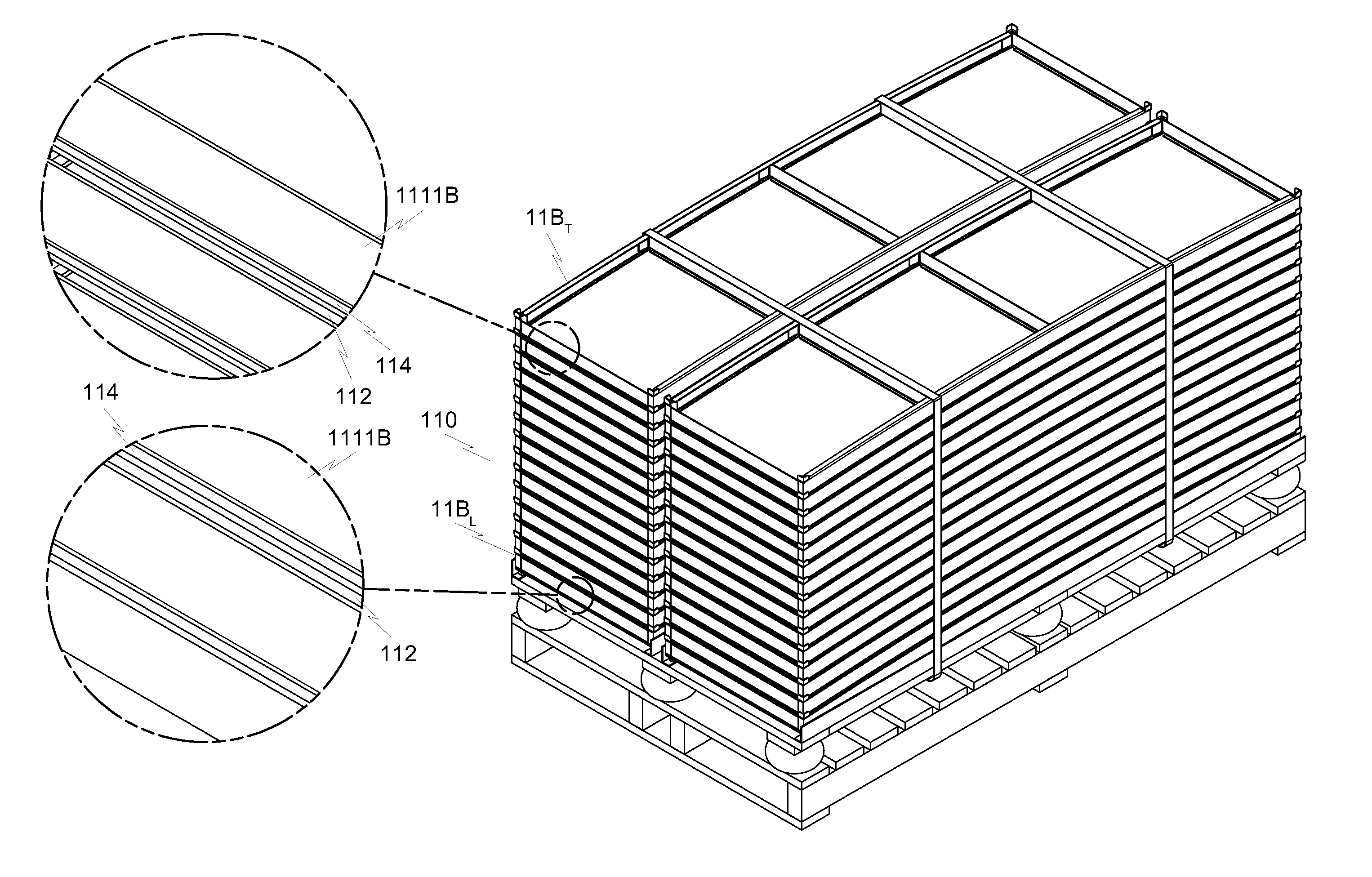Systems for cost effective concentration and utilization of solar energy
a technology of solar energy and concentrated photovoltaics, applied in the direction of pv power plants, indirect heat exchangers, lighting and heating apparatus, etc., can solve the problems of limiting reducing the efficiency of the manufacturing process, and reducing the production capacity of a given investment in tooling. , to achieve the effect of low iron content, low absorption and low dispersion
- Summary
- Abstract
- Description
- Claims
- Application Information
AI Technical Summary
Benefits of technology
Problems solved by technology
Method used
Image
Examples
Embodiment Construction
First Family of Preferred Embodiments
Improvements to Methods for Making Pre-Shaped Reflective Panels for High-Concentration Solar Systems
[0429]Pre-shaped solar glass mirrors offer the highest specular reflectivity of any current cost-effective reflective surface, and also offer one of the most scratch-resistant surfaces and have the longest proven field life as well. However pre-shaped solar glass mirrors are currently too expensive. Pre-shaped glass parabolic trough segments are generally made by pressing flat mirrored glass sheets against an accurately curved parabolic mandrel while an adhesive bonding the glass to a sturdy backing material sets, or similarly pre-shaping a backing material and then bonding the glass to it (“Sandwich Construction Solar Structural Facets, Sandia National Labs 1999), or by slump-molding glass against an accurate mandrel. When the glass is thin enough and the curvature is slight enough, even compound curves can be formed in glass mirrors by cold press...
PUM
 Login to View More
Login to View More Abstract
Description
Claims
Application Information
 Login to View More
Login to View More - R&D
- Intellectual Property
- Life Sciences
- Materials
- Tech Scout
- Unparalleled Data Quality
- Higher Quality Content
- 60% Fewer Hallucinations
Browse by: Latest US Patents, China's latest patents, Technical Efficacy Thesaurus, Application Domain, Technology Topic, Popular Technical Reports.
© 2025 PatSnap. All rights reserved.Legal|Privacy policy|Modern Slavery Act Transparency Statement|Sitemap|About US| Contact US: help@patsnap.com



